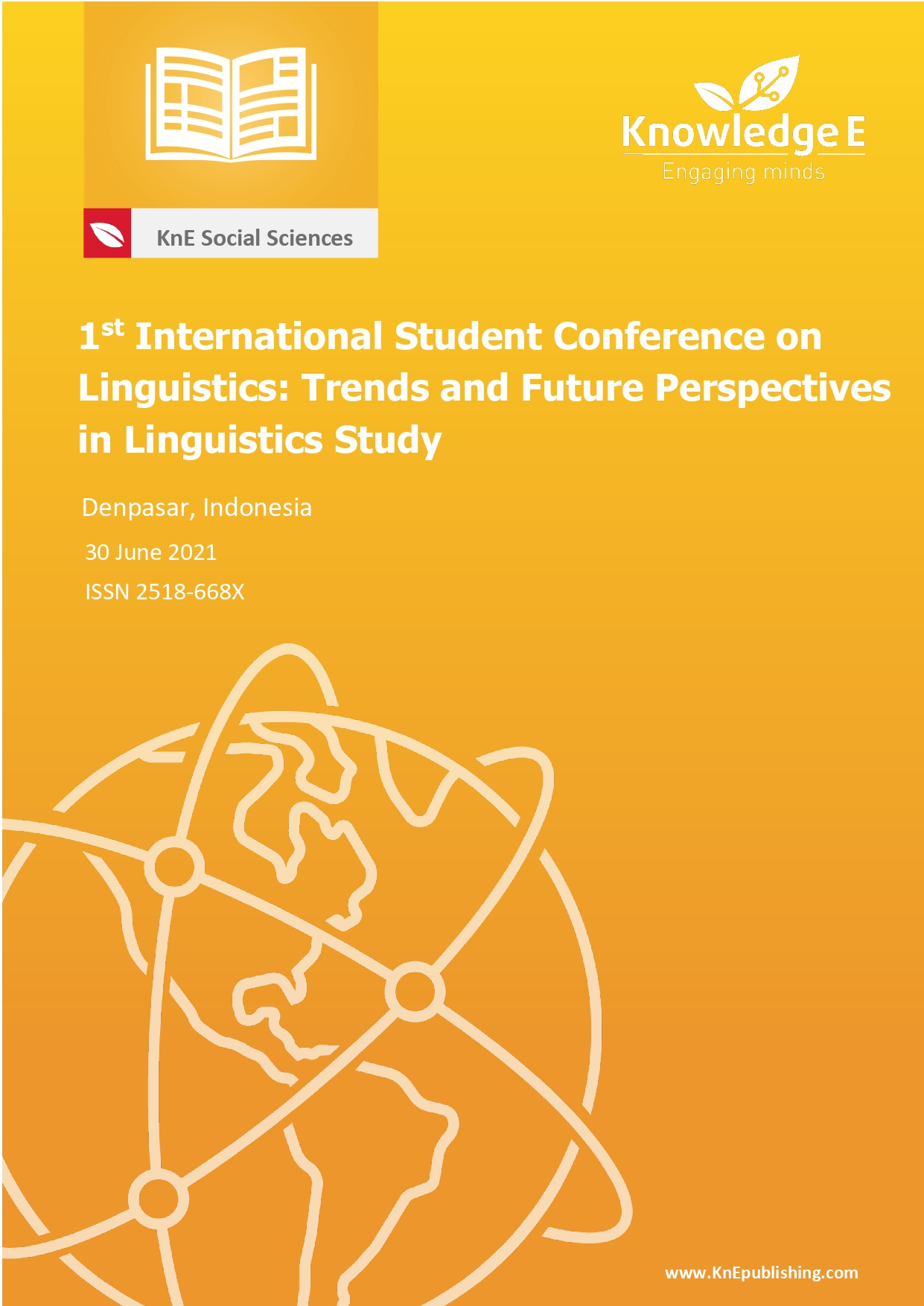Derivational Affixation in Central Dialect of Nias Language
DOI:
https://doi.org/10.18502/kss.v7i10.11274Abstract
Nias language (BN) or Li Niha is a regional language used by the people of the Nias islands. This language is found in the Nias archipelago, which is in the west of the island of Sumatra. This study aimed at describing derivational affixations found in Nias Language Central Dialect (BNDT). The focus of this research is a description of the types, processes, meanings, and functions of derivational affixations found in BNDT. The research design applied was descriptive research approach. The data were taken from the results of elicitation and interview with informants who are speakers from BNDT. The analysis results were presented using formal and informal methods. Based on the analysis data, it was found that there were 5 general types of derivational affixations in BNDT, namely 7 main prefixes: prefix {a{a-}, {e-}, {ma-}, {fa-}, {sa-}, {o-}, and {me-}; 15 main suffixes include suffixes {-}, {-k}, {-g}, {-isi}, {-si}, {-ini}, {-ni}, {-i}, {-f}, {-t}, {-fi}, {-ma}, {-la}, {-a}, and {-sa}; 19 confixes {a-/-}, {a-/-si}, {e-/-}, {e-/-isi}, {e-/-t}, {ma-/-}, {man-/-g}, {ma-/-ini}, {ma-/-isi}, {ma-/-i}, {fa-/-}, {fa-/-si}, {fa-/-ni}, {fo-/-i}, {fa-/-fi}, {fa-/-sa}, {fo-/-g}, {fa-/-}, and {a-/-si}; 3 types of simulfixes a-/-la}, {a-/-ta}, and {o-/-g}; and 10 types of affix combination {man-a-}, {man-e}, {man-e-/-}, {ma-mo-}, {mo-/-g-isi}, {fo-an-/-g}, {fan-e-}, {fan-a-/-si},{o-si-}, dan {o-si-/-g}. The meaning of the affixation was seen from the meaning of the new word formed as a result of comparing the affix with its basic form, and the function of the affix was repealed from the grammatical class changes of a new word after affixation.
Keywords: affixation, derivational, BNDT, process, function and meaning
References
[2] Aronoff M. Word-formation in generative grammar. Cambridge: The Massachusetts Institute of Technology Press; 1976.
[3] Ba’dulu AM. Morfosintaksis. Jakarta: Rineka Cipta; 2015.
[4] Bauer L. English word - formation. Cambridge: Cambridge University Press; 1988.
[5] Chaer A. Morfologi bahasa Indonesia. Jakarta: Rineka Cipta; 2008.
[6] Chaer A. Tata bahasa praktik bahasa Indonesia. Jakarta: PT Bhratara Karya Aksa; 1998.
[7] Gulo I. Nias Unmutated Personal Pronouns. IOSR Journal of Humanities and Social Science. 2014;19(1):129–134.
[8] Gulo TA. Reduplikasi dalam bahasa nias dialek utara. Tesis. Denpasar. Universitas Warmadewa; 2019.
[9] Halawa T et al. Struktur bahasa nias. Departemen Pendidikan dan Kebudayaan. Jakarta; 1983.
[10] Halle M. Prolegomena of word to a theory formation. Linguistic Inquiry. 1973;4(I).pp.3- 16.
[11] Katamba F. Morphology. New York: St. Martin’s Press; 1993.
[12] Katamba F. English words. London: Routledge; 1994.
[13] Kridalaksana H. Kamus linguistik. Jakarta: Gramedia; 1993.
[14] Kridalaksana H. Pembentukan kata dalam bahasa Indonesia. Gramedia: Gramedia Pustaka Utama; 2007.
[15] Krug M, Schlüter J. Research methods in language variation and change. Cambridge: Cambridge University Press; 2013.
[16] Marafad LO, Sari N. Mutiara bahasa: Seluk beluk bahasa dan uraiannya. Yogyakarta: Pustaka Puitika; 2013.
[17] Marulafau S. Morfologi verba bahasa nias dialek Gunungsitoli. Tesis. Medan: Universitas Sumatera Utara; 2004.
[18] Marulafau S. Verbal characteristics in Gunungsitoli Dialect of Nias language. International Journal of Multidiscplinary Research and Development. 2018;5(1):24– 29.
[19] Muslich M. Tata bentuk bahasa Indonesia. Jakarta: Bumi Aksara; 2010.
[20] Ndruru S. Klitika bahasa nias dialek tengah. Tesis. Medan: Universitas Sumatera Utara; 2007.
[21] Ndruru S. Afiksasi infleksional bahasa nias dialek utara. Denpasar: Universitas Warmadewa; 2017.

